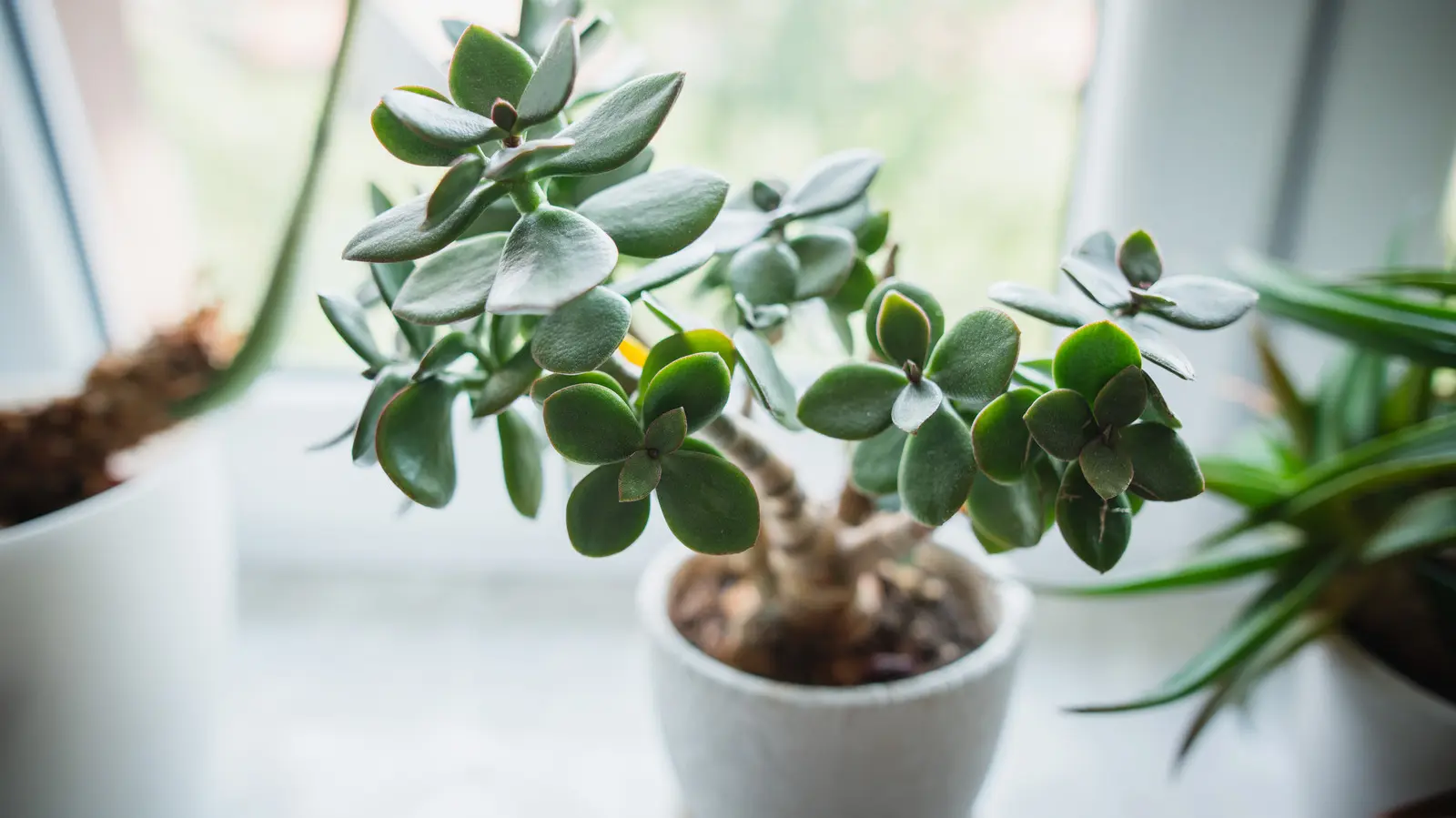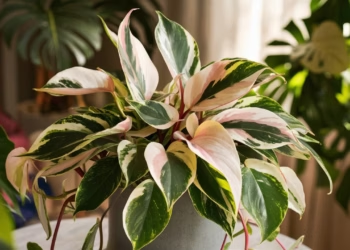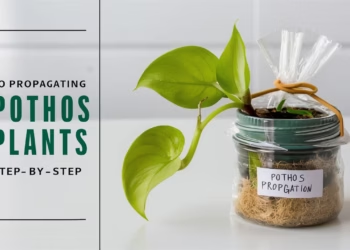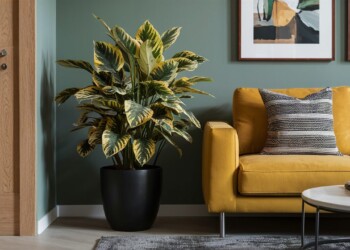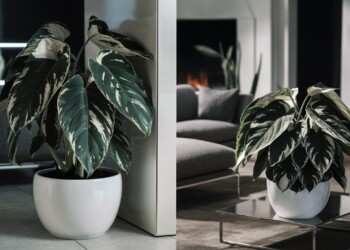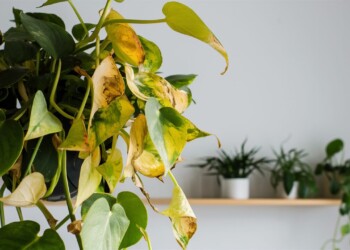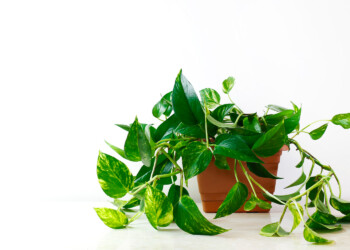So, you’ve got yourself a jade plant, huh? Congrats, green thumb! These sturdy little fellas are like the Chuck Norris of the plant world – tough as nails and practically indestructible. But hey, they might not be immortal, and even the toughest warriors need a bit of love! This is where you come in, the guardian of your jade’s well-being. In this guide, we’re going to spill the beans on how to take care of jade plants. It’s like a crash course in “Jade Plant Parenting 101” – no need for a green cape, just grab your watering can and let’s dive in!
Table Of Contents
The Lowdown on Jade Plants
Alright, before we get into the nitty-gritty, let’s chat about what makes these plants tick. Jade plants, also known as Crassula ovata or the money plant, are like the cool kids of the succulent world. They’re known for their thick, fleshy leaves and their knack for surviving in conditions that would make other plants throw in the towel.
What Makes Jade Plants Tick?
- Drought Warriors: These bad boys love to live life on the edge – the dry edge. They’re all about drought resistance, making them perfect for those who occasionally forget to water their leafy companions.
- Sun Seekers: Jades are like sun-worshippers. They thrive in bright, indirect sunlight. Give them the spotlight, but no direct beams, please!
- Pottery Lovers: These guys appreciate a good home. A well-draining pot with a side of quality soil is their jam. No soggy feet for these succulents!
Choosing the Perfect Jade Plant
When selecting your jade plant, opt for the “straight species,” Crassula ovata, renowned for its distinctive fleshy, oval leaves. If you’re feeling adventurous, explore cultivars like the Spoon jade plant, featuring tubular leaves with a unique, spoon-like appearance. Regardless of the variety, all jade plants share similar care requirements, making them an ideal addition to any indoor space.

Optimal Conditions for Jade Plants
For indoor cultivation, position your jade plant in the brightest spot available, tolerating even direct sunlight. While they can survive in lower light conditions, flourishing requires ample brightness. Protect them from cold drafts, ensuring a cozy environment. During summer, introduce them outdoors gradually, acclimating them to sunlight variations for optimal health.
Planting Your Jade with Precision
- Container Selection: Choose a container with drainage holes, not exceeding 2 inches wider than the root ball.
- Potting Mix: Employ Miracle-Gro Cactus, Palm & Citrus Potting Mix, offering stellar drainage and essential nutrients.
- Plant Placement: Position the jade plant with the root ball an inch below the container rim, allowing room for watering.
- Potting Completion: Fill gaps with potting mix, pat gently, water thoroughly, and place the pot in its designated spot.

The Jade Plant Care Playbook
Now that you know your jade plant on a first-name basis, let’s get down to business. How do you take care of jade plants? Fear not, we’ve got you covered!
Light: Let the Sunshine In!
Jade plants are sunshine junkies, but they’re not keen on getting sunburnt. Find a bright spot for your green buddy, preferably by a window with filtered light. Morning sunlight is like a power-up for them, but that harsh afternoon sun? Not their cup of tea.
Water: how often do you water a jade plant?
Okay, here’s the deal – jades are chill with the whole “water me” concept, but they’re not into waterlogged drama. Stick to a moderate watering routine. Let the top 1 to 2 inches of soil dry out between sips, typically every 2 to 3 weeks indoors. Watch for blisters on leaves, signaling excess water. Outdoor placement during summer demands extra caution during rainy periods to prevent waterlogging. Overwatering? That’s a no-go zone.
Pro Tip: Give your jade plant a good soak when you do water, but make sure that excess water can escape through the pot’s drainage holes. Nobody likes wet feet, especially not your jade!

Soil: Picky Eaters
Jades are a bit like picky eaters when it comes to soil. They prefer well-draining soil that doesn’t hold onto moisture for dear life. A succulent or cactus mix is the VIP pass to their heart.
Nourishing Your Jade to Greatness
Commence feeding your jade plant a month after planting, using succulent plant Food. This specialized food provides the perfect nutrients for succulents, promoting robust growth. Follow the application directions, adjusting for pot size, and witness your jade plant flourish under the ideal nutrient balance.

Temperature: Keep It Comfy
Remember, your jade plant doesn’t want to experience arctic chills or tropical heatwaves. They’re content with temperatures between 65-75°F (18-24°C). If you’re sweating or shivering, chances are your jade is, too!
Pruning: A Little Off the Top
Hey, everyone needs a trim now and then – even your jade plant. Pruning isn’t just for your hair; it’s for maintaining your plant’s shape and promoting healthy growth. Snip away any leggy stems or dead leaves – your jade will thank you!
Pruning jade plants is a minimal task, reserved for removing dead or shriveled branches. Feel free to shape them into bonsai-like forms if desired. The forgiving nature of jade plants ensures they thrive regardless of pruning, constantly renewing growth.

Propagation Made Simple
Jade plants offer an exciting opportunity for propagation. Break off a piece, remove lower leaves, let it dry for a couple of days, then plant it in potting mix. Share the joy by gifting these propagated plants to friends, spreading the green love effortlessly. Alternatively, stick a picked leaf directly into the soil, and watch roots and new leaves emerge.

So, there you have it – the lowdown on how to take care of jade plants. It’s like being the guardian of a little green superhero. From sunlight snacking to water sipping, these tips will turn you into the ultimate jade parent. Just remember, even Chuck Norris needs a pat on the back now and then – show your jade some love, and it’ll reward you with a lifetime of green glory. Happy planting!
FAQs
How do you care for an indoor jade plant?
To care for an indoor jade plant:
- Light: Provide bright, indirect sunlight. Jade plants can tolerate some direct sunlight, but prolonged exposure may cause leaf burn.
- Soil: Use well-draining cactus or succulent mix.
- Watering: Allow the soil to dry out between waterings. Water thoroughly and ensure proper drainage.
- Temperature: Maintain temperatures between 65-75°F (18-24°C) during the day and 50-55°F (10-13°C) at night.
- Humidity: Jade plants prefer dry conditions and are not demanding regarding humidity.
- Fertilization: Feed with a balanced, diluted liquid fertilizer during the growing season (spring and summer).
How often do you water a jade plant
Water a jade plant when the top inch of the soil feels dry. Typically, this may mean watering every 2-3 weeks, but frequency can vary based on factors like temperature, humidity, and the size of the pot. Ensure proper drainage to prevent overwatering.
Do jade plants need direct sunlight?
While jade plants can tolerate some direct sunlight, they prefer bright, indirect light. Prolonged exposure to intense direct sunlight may cause leaf burn. Place them near a window with filtered or indirect sunlight for optimal growth.
Where should you place a jade plant in your house?
Place a jade plant in a location with bright, indirect sunlight. A south or west-facing window is ideal. If placed outdoors, ensure it receives some protection from harsh afternoon sun. Jade plants can tolerate lower light levels, but they may become leggy with less sunlight.
What are the disadvantages of jade plants?
While jade plants are popular and relatively easy to care for, some disadvantages include:
- Toxicity: Jade plants are toxic to pets if ingested, so caution is needed in households with animals.
- Susceptibility to overwatering: Overwatering can lead to root rot, a common issue if the soil is kept consistently wet.
- Leaf drop: Jade plants may drop leaves in response to stress, such as sudden changes in light or temperature.
How do I get my jade plant to bloom?
Getting a jade plant to bloom can be challenging, as they infrequently produce flowers indoors. However, a few tips to encourage blooming include:
- Mature age: Jade plants typically need to be several years old before they are mature enough to flower.
- Cooler temperatures: Mimic winter conditions by exposing the plant to cooler temperatures (50-55°F or 10-13°C) and reduced water during the fall and winter.
- Natural light cycles: Allow the plant to experience natural light cycles, including shorter days, to trigger potential blooming.
